Role Runner Name Louis Zamperini | Years of service 1941–1945 | |
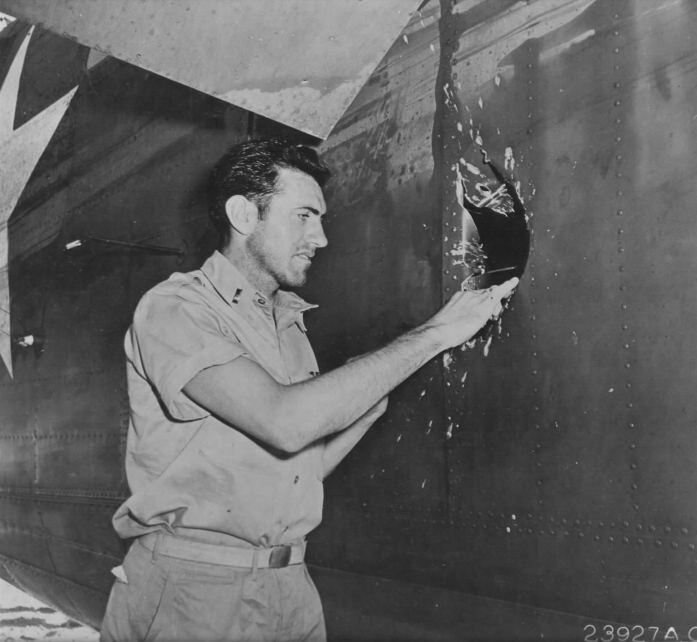 | ||
Born January 26, 1917Olean, New York ( 1917-01-26 ) Allegiance United States of America Battles/wars World War IIPacific War Died July 2, 2014, Los Angeles, California, United States Spouse Cynthia Applewhite (m. 1946–2001) Children Luke Zamperini, Cissy Zamperini Movies Zamperini: Still Carrying the Torch Books Devil at My Heels: A Heroic Olympian's Astonishing Story of Survival as a Japanese POW in World War II Similar People | ||
Birth name Louis Silvie Zamperini | ||
Louis zamperini documentary
Louis Silvie "Louie" Zamperini (January 26, 1917 – July 2, 2014) was a US prisoner of war survivor in World War II, a Christian evangelist and an Olympic distance runner.
Contents
- Louis zamperini documentary
- Wwii hero and alumnus louis zamperini visits usc annenberg class
- Early life
- High school
- Olympic career
- Collegiate career
- Military career and prisoner of war
- Post war life
- Death
- Legacy and awards
- Books
- In popular culture
- References

Zamperini took up running in high school and qualified for the US in the 5000m race for the 1936 Berlin Olympics. He finished 8th in the event. In 1941 he was commissioned into the United States Army Air Forces as a Lieutenant. He served as a bombardier in B-24 Liberators in the Pacific. On a search and rescue mission, mechanical difficulties forced Zamperini's plane to crash in the ocean. After drifting at sea for 46–47 days (island spotted on the 46th, and arrived on 47th) he landed on the Japanese occupied Marshall Islands and was captured. He was taken to a prison camp in Japan where he was tortured. Following the war he initially struggled to overcome his ordeal. Later he became a Christian Evangelist with a strong belief in forgiveness. Zamperini is the subject of two biographical films, the 2014 Unbroken and the 2015 Captured by Grace.
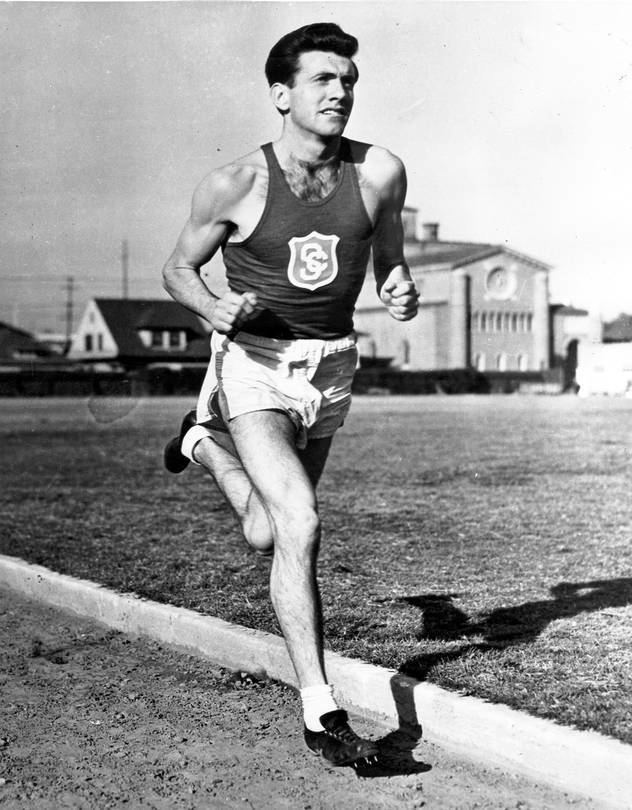
Wwii hero and alumnus louis zamperini visits usc annenberg class
Early life
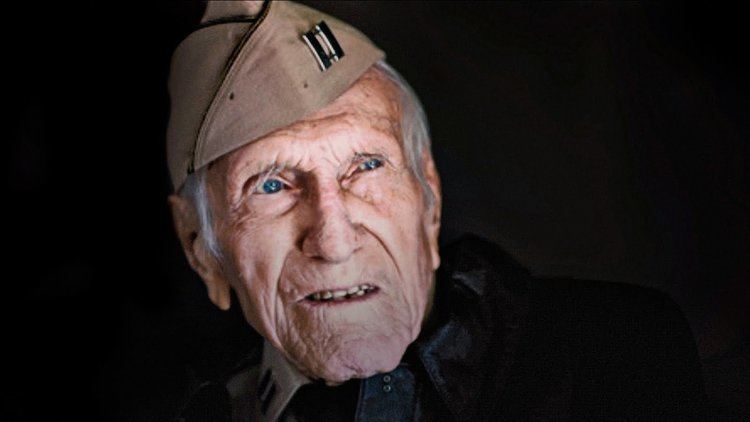
Zamperini was born January 26, 1917 in Olean, New York, to Anthony Zamperini and Louise Dossi, both native to Verona in Northern Italy. He had an older brother named Pete and two younger sisters, Virginia and Sylvia. He was raised in a strict Catholic household. His family moved to Torrance, California, in 1919, where Louis attended Torrance High School. Zamperini and his family spoke no English when they moved to California, making him a target for bullies because of Italian culture. Zamperini was chased and caught by police for a stolen beer and brought home to his parents who dealt with him. His father taught him how to box in self-defense. Soon he claimed to be "beating the tar out of every one of them." He added, "but I was so good at it that I started relishing the idea of getting even. I was sort of addicted to it."
High school
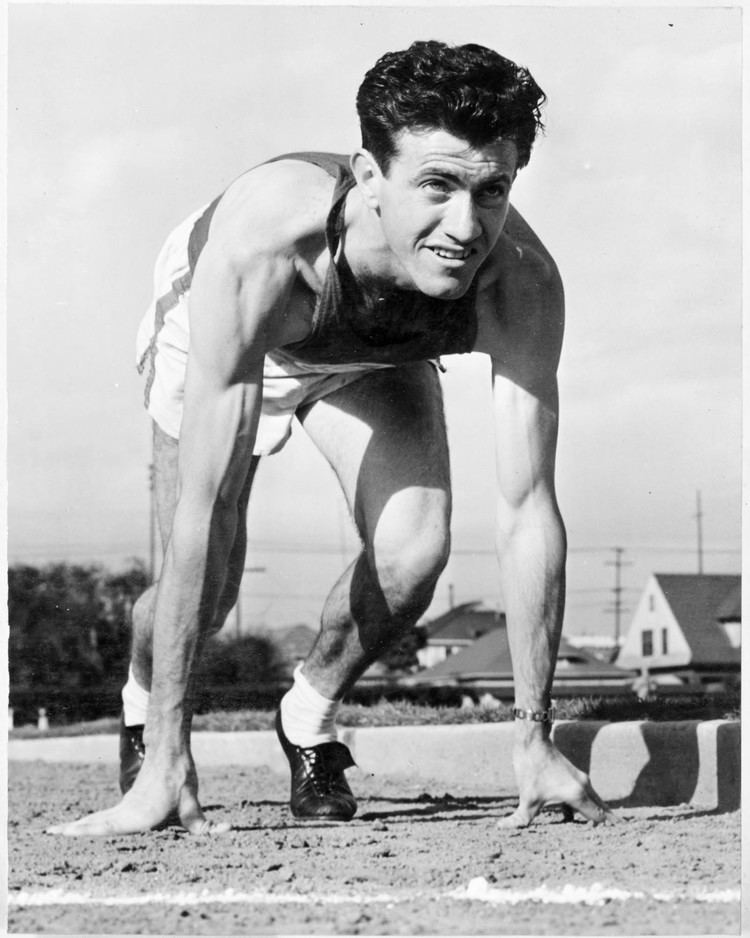
To stop him from getting into trouble, his older brother Pete got Zamperini involved in the school track team where Pete was already a star. Pete took Louis on training runs. At the end of his freshman year, he finished 5th in the All City C-division 660-yard (600 m) dash.

It was the recognition, nobody in school, except for a few of my buddies, knew my name before I started running. Then, as I started winning races, other kids called me by name. Pete told me I had to quit drinking and smoking if I wanted to do well, and that I had to run, run, run. I decided that summer to go all out. Overnight I became fanatical. I wouldn't even have a milkshake.
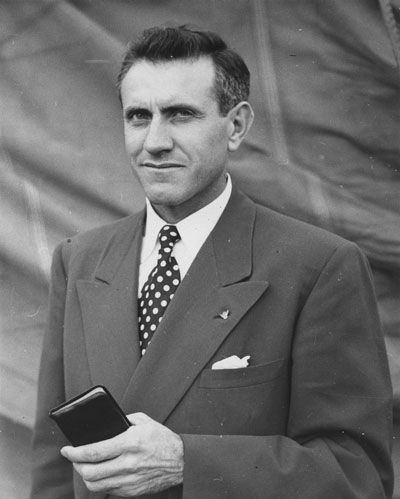
After a summer of running in 1932, starting with his first cross-country race, and throughout the last three years of high school, Zamperini was undefeated. He started beating his brother's records. In 1934, Zamperini set a world interscholastic record for the mile, clocking in at 4:21.2 minutes (or 4:21.3 minutes) at the preliminary meet to the California state championships. The following week, he won the CIF California State Meet championships with 4:27.8 minutes. That record helped him win a scholarship to the University of Southern California. During his college life in the University of Southern California, he was part of the Delta Eta Chapter of the Kappa Sigma Fraternity.
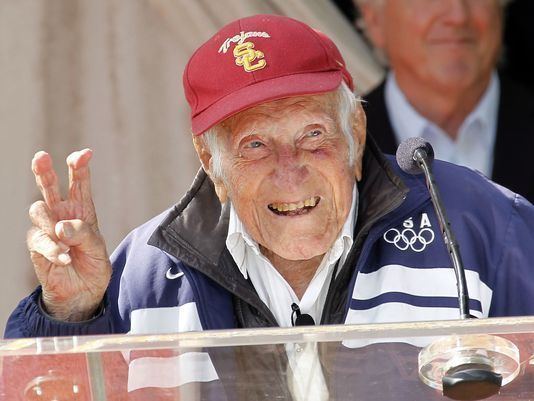
In 1936, Zamperini decided to try out for the Olympics. In those days, athletes had to pay their way to the Olympic Trials, but since his father worked for the railroad, Louis could get a train ticket free of charge. A group of Torrance merchants raised enough money for the local hero to live on once he got there. The 1,500 metres was stacked that year with eventual silver medalist Glenn Cunningham, Archie San Romani and Gene Venzke all challenging to get on the team.

Zamperini could not get into what he did best, the 1500 meters, but he ran the 5,000 metres. On one of the hottest days of the year during the 1936 North American heat wave in Randalls Island, New York, the race saw co-favorite Norm Bright and several others collapse during the race. It was reported that 40 people died from the heat in Manhattan alone that week. With a sprint finish at the end, Zamperini finished in a dead-heat tie against American record-holder Don Lash and qualified for the 1936 Summer Olympics in Berlin, Germany. At 19 years, 178 days, Zamperini is still the youngest American qualifier ever in the 5,000 meters.
Olympic career
Neither Zamperini nor Lash were believed to have much chance of winning the 1936 Olympics 5000-meter race against world record holder Lauri Lehtinen. Zamperini later related several anecdotes from his Olympic experience, including gorging himself on the boat trip to Europe: "I was a Depression-era kid who had never even been to a drugstore for a sandwich in his life ," he said. "And all the food was free. I had not just one sweet roll, but about seven every morning, with bacon and eggs. My eyes were like saucers." By the end of the trip, Zamperini, in common with most athletes on the ship, had gained a good deal of weight: in Zamperini's case, 12 pounds (5 kg). While the weight gain was not advantageous for his running, it was necessary for his health, as he had lost 15 pounds (7 kg) while training in the summer heat in New York for the Olympic Trials.
Zamperini finished 8th in the 5000-meter distance event at that Olympics, but his final lap of 56 seconds was fast enough to catch the attention of Adolf Hitler, who insisted on a personal meeting. As Zamperini told the story, Hitler shook his hand, and said simply, "Ah, you're the boy with the fast finish."
Collegiate career
After the Olympics, Zamperini enrolled as a student at the University of Southern California. At USC, he was a member of the Kappa Sigma Fraternity (Delta-Eta Chapter). In 1938, Zamperini set a national collegiate mile (~1609 metres) record of 4:08 minutes, despite severe cuts to his shins from competitors attempting to spike him during the race; this record held for fifteen years, earning him the nickname "Torrance Tornado."
Military career and prisoner of war
Zamperini enlisted in the United States Army Air Corps in September 1941 and earned a commission as a second lieutenant. He was deployed to the Pacific island of Funafuti as a bombardier on the Consolidated B-24 Liberator bomber Super Man. In April 1943, during a bombing mission against the Japanese-held island of Nauru, the bomber was badly damaged in combat. With Super Man no longer flight-worthy, and a number of the crew injured, the healthy crew members were transferred to Hawaii to await reassignment. Zamperini, along with some other former Super Man crewmates, was assigned to conduct a search for a lost aircraft and crew. They were given another B-24, Green Hornet, notorious among the pilots as a defective "lemon." (Aircraft records show several B-24s with the name: "Green Hornet" and "The Green Hornet"; in this case the name was verified from Zamperini's diary before the mission.) On May 27, 1943, while on the search, mechanical difficulties caused the bomber to crash into the ocean 850 miles (1,370 km) south of Oahu, killing eight of the 11 men aboard.
The three survivors (Zamperini and his crewmates, pilot Russell Allen "Phil" Phillips and Francis "Mac" McNamara), with little food and no water, subsisted on captured rainwater, small fish eaten raw, and birds that landed on their raft. "Mac" ate all the chocolate they had in a panic, but he later redeemed himself by using an oar to defend the survivors from a shark attack. With the few tools they were able to salvage from the crash, the men were able to manage on two small rafts that got released. They caught two albatrosses, which they ate, and used pieces as bait to catch fish, all while fending off constant shark attacks and nearly being capsized by a storm. They were strafed multiple times by a Japanese bomber, which punctured their life raft, but no one was hit. McNamara died after 33 days at sea. To wish him a good life, free from the war, he was wrapped up and sent into the sea.
On their 47th day adrift, Zamperini and Phillips reached land in the Marshall Islands and were immediately captured by the Japanese Navy. They were held in captivity, severely beaten, and mistreated until the end of the war in August 1945. Initially held at Kwajalein Atoll, after 42 days they were transferred to the Japanese prisoner-of-war camp at Ōfuna, for captives who were not registered as prisoners of war (POW). Zamperini was later transferred to Tokyo's Ōmori POW camp, and was eventually transferred to the Naoetsu POW camp in northern Japan, where he stayed until the war ended. He was tormented by prison guard Mutsuhiro "The Bird" Watanabe, who was later included in General Douglas MacArthur's list of the forty most wanted war criminals in Japan. Held at the same camp was then-Major Greg "Pappy" Boyington, and in his book, Baa Baa Black Sheep, he discusses Zamperini and the Italian recipes Zamperini would write to keep the prisoners' minds off the food and conditions. Zamperini had at first been declared missing at sea, and then, a year and a day after his disappearance, KIA. When he eventually returned home, he received a hero's welcome.
Post-war life
Zamperini married Cynthia Applewhite in 1946, to whom he remained married until her death in 2001. They had one daughter, Cissy, and one son, Luke. In a televised interview on the Christian Broadcasting Network in 2003, Zamperini related that after the war, he had nightmares about strangling his former captors and began drinking heavily, trying to forget his experiences as a POW. His wife Cynthia attended one of the evangelical crusades led by Billy Graham in Los Angeles, and became a born-again Christian. In 1949, at the encouragement of his wife and her Christian friends, Zamperini reluctantly agreed to attend a crusade. Graham's preaching reminded him of his prayers during his time on the life raft and imprisonment, and Zamperini recommitted his life to Christ. Following this, he forgave his captors, and his nightmares ceased.
Later Graham helped Zamperini launch a new career as a Christian evangelist. One of his recurring themes was forgiveness, and he visited many of the guards from his POW days to let them know that he had forgiven them. This included an October 1950 visit to Sugamo Prison in Tokyo, where many war criminals were imprisoned, and expressed forgiveness to them. Zamperini told CBN that some became Christians in response.
Four days before his 81st birthday in January 1998, Zamperini ran a leg in the Olympic Torch relay for the Winter Olympics in Nagano, Japan, not far from the POW camp where he had been held. While there, he attempted to meet with his chief and most brutal tormentor during the war, Mutsuhiro Watanabe, also known as "the Bird", who had evaded prosecution as a war criminal, but Watanabe refused to see him. In March 2005, Zamperini returned to Germany to visit the Berlin Olympic Stadium for the first time since he had competed there.
In his 90's, Zamperini continued to attend USC football games, and he befriended star quarterback Matt Barkley in 2009.
Zamperini appeared on The Tonight Show with Jay Leno on June 7, 2012, speaking about his life in general, the 1936 Olympics, and his World War II exploits.
Death
His death had mistakenly been announced previously, when the US government classified him as KIA during World War II, after his crew's borrowed B-24 Liberator aircraft, The Green Hornet went down in 1943, and no survivors were located by the military. President Franklin D. Roosevelt even sent Zamperini's parents a formal condolence note in 1944.
Zamperini's death came 70 years later, from pneumonia, on July 2, 2014, in Los Angeles, at home, aged 97.
Legacy and awards
Books
Zamperini wrote two memoirs about his experiences, both bearing the same title: Devil at My Heels. The first, written with Helen Itria, was subtitled "The Story of Louis Zamperini," and was published by Dutton in 1956. The second, subtitled "A World War II Hero's Epic Saga of Torment, Survival, and Forgiveness," written with David Rensin, bore a familiar title but was top to bottom wholly new, and with much additional information. It was published in 2003 by William Morrow.
Laura Hillenbrand, author of Seabiscuit: An American Legend (2001), wrote a biography of Zamperini. The book, entitled Unbroken: A World War II Story of Survival, Resilience, and Redemption (2010) and published by Random House, was a #1 New York Times bestseller. It was named the top nonfiction book of 2010 by Time Magazine.
In popular culture
Zamperini features as a character in the 2012 novel Flight from Berlin by David John, published by HarperCollins.
In 2010, Zamperini detailed his experiences in Unbroken: A World War II Story of Survival, Resilience, and Redemption, written by Laura Hillenbrand. The book went on to become a best seller and won several awards. It was later adapted into the film Unbroken. The film is directed by Angelina Jolie, was adapted by the Coen brothers, and stars Jack O'Connell as Zamperini.
In 2015 the Billy Graham organization released a 30-minute documentary, Captured by Grace. The film details Zamperini's faith, to which he credited his "unbroken" status.
